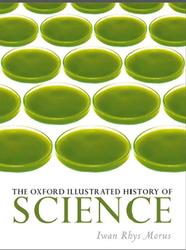The first book in the history and philosophy of science that I can remember reading as an undergraduate thirty years ago was Alan Chalmers’s What is This Thing Called Science? The copy is still on my shelves somewhere. The title has stuck with me for a number of reasons. The question it asks appeals because the answers turn out to be so unexpectedly elusive and slippery. At first sight it appears obvious what science is— it’s what scientists do. Very few people now would deny the critical role that science plays in underpinning contemporary life. Science, and the technological offshoots of science, are everywhere around us. Modern science does not just provide us with technological fixes, though. Its ideas and assumptions are embedded in a very fundamental way in the ways we make sense of the world around us. We turn to science to explain the material universe, and to account for our spiritual lives. We routinely use science to talk about the ways we talk to each other. But what do we really mean by science? It’s a uniquely human activity, after all. At its broadest level, science stuns up the ways we make sense of the world around us. It’s the set of ways we interact with the world—to understand it and to change it. It is this humanity at the heart of science that makes understanding its history and its culture so important.

